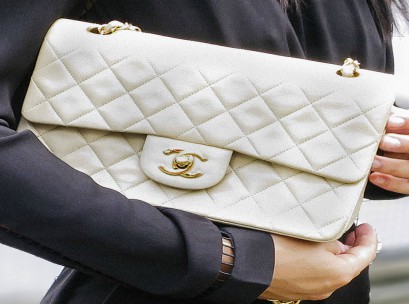 At the start of 2015, then 28-year-old commercial lawyer Miranda Gillespie was in the market for a luxury handbag.
At the start of 2015, then 28-year-old commercial lawyer Miranda Gillespie was in the market for a luxury handbag.
Unprepared to pay several thousand dollars for the latest Louis Vuitton or Gucci design, she began searching for the secondhand market, only to find a mess of private groups and unscrupulous purveyors of fakes.
Not long after, she founded Luxe It Fwd, an online marketplace for secondhand luxury handbags, swiping 60 per cent off the recommended retail price of prominent luxury brands.
Gillespie’s experience is similar to that of a growing number of shoppers buying into a retail experience that was once considered an oxymoron – affordable luxury.
The advent of social media and e-commerce has given way to an explosion in the secondhand luxury scene, bringing brands like Louis Vuitton, Gucci and Hermes to shoppers previously restricted to the middle-upper portion of the market.
Gillespie is now running a fast growing and profitable retail enterprise taking advantage of the trend, undercutting the traditional luxury category by legitimising the aftermarket.
“For the first time, companies like us are actually making luxury affordable, which really hasn’t happened before outside of eBay or Gumtree and the fakes that go with that,” Gillespie tells IRW.
The coveted Hermes Birkin retails for more than $25,000 at ultra-luxury retailer Madison Avenue Couture, but on Gillespie’s website, it’s currently priced at $9000, with just a little bit of wear.
Third party authenticators are engaged alongside the promise of a free refund to make the proposition risk-free, a reality that Gillespie says has attracted an entirely new type of customer to previously prohibitive parts of the market.
The model was inspired by companies like Yoogi’s Closet in the US, and essentially works like a controlled marketplace, with potential sellers submitting online forms before sending their items to a central location for subsequent re-sale.
Gillespie takes a cut from the top and is selective about which products to stock, based on quality, age and designer.
She’s not the only one either. Since 2016, local players like Revoir and Modsie have emerged, expanding the category range of the legitimate aftermarket.
Revoir, founded by business consultants Claire Grego and Andrew Wilson, sells apparel and accessories, including Hermes coats and Stella McCartney heels at steeply discounted prices.
Next stage of evolution
Queensland University of Technology business school associate professor Gary Mortimer doesn’t think the proliferation of secondhand luxe businesses is an accident, seeing it as an evolution from other developments in affordable luxury, such as the international success of off-price retailer TJ Maxx, which is expanding its TK Maxx brand into Australia.
“Retailers have seen a real opportunity to sell marked down end of season end of run product,” Mortimer says. “The mark down end of season lines have been so successful that they’ve been able to develop their own stores around it.”
“The next tier down from that isn’t necessarily end of season markdown stock but certainly a secondhand market that operates within the retail sphere.”
Gillespie says price is only the first of Luxe It Fwd’s draw cards though, noting the mere fact that her business is retailing online as a factor drawing customers in.
“There’s a really big take up for buying preowned and having luxury become accessible, but it will be interesting to see whether the actual fashion houses themselves move with that, particularly in terms of e-commerce and being more accessible.”
“A number of customers feel intimidated by the boutique experience.”
Middle market threatened
The legitimisation of the secondhand luxury market is a potential headwind for luxury brands themselves, particularly as luxury items are high quality and generally well cared for. Many luxe lines even increase in desirability with age, providing a further edge to the aftermarket.
But Mortimer doesn’t think ultra luxury players will be disrupted, noting that they are generally insulated from many of the common factors that plague the broader sector when new competitors enter the market.
“Those retailers target a different market. If you’re in the market for a brand new handbag and you have the financial capacity to pay for a brand new Louis Vuitton handbag, you’re not going to buy a discounted one and you’re certainly not going to be a secondhand one,” he explains.
Instead, he believes that secondhand luxury is a risk for middle-to-upper market department stores such a Myer, David Jones, Witchery and Country Road because customers who were previously confined to that part of the market are now given the option of shopping luxury within a similar price range.
“When you’re able to provide very good quality luxury branded products at a reasonably low price, you’ll capture that middle market consumer that wants good quality at great value.
“They can’t afford to shop with the brands themselves, but if they can get the branded product, then the likes of TK Maxx and secondhand markets will have a direct impact on those middle market players like Myer and to some extent David Jones,” Mortimer says.
It’s another potential problem in a line of challenges for Myer and David Jones, which have been struggling to attract consumer to their upper-market lines. Myer signalled a $38.8 million impairment on its wholly-owned sass & bide label last week after poor performance throughout FY17.





